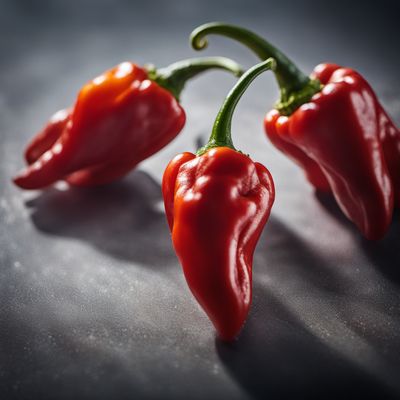
Ingredient
Capsicum annuum hot cultivars
The Fiery Spectrum: Exploring Hot Capsicum Cultivars
Capsicum annuum hot cultivars, also known as hot peppers, come in various shapes, sizes, and heat levels. They can range from mildly spicy to intensely hot, with flavors that can be fruity, smoky, or even floral. The vibrant colors of these peppers, such as red, orange, or yellow, add visual appeal to dishes. Whether used fresh, dried, or in the form of hot sauces, these peppers are a staple in many cuisines.
Origins and history
Capsicum annuum hot cultivars have a rich history that spans continents and cultures. Native to the Americas, these peppers were cultivated by indigenous communities for thousands of years. They were later introduced to Europe and Asia through trade routes, becoming integral ingredients in various regional cuisines. Today, hot cultivars like jalapeños, serranos, and Thai chilies are widely used in Mexican, Thai, and Indian cuisines, respectively.
Nutritional information
Capsicum annuum hot cultivars are low in calories and a good source of vitamins A and C. They also contain capsaicin, a compound responsible for their heat, which has been associated with various health benefits, including pain relief and improved metabolism.
Allergens
May cause allergic reactions in individuals sensitive to nightshade plants.
How to select
When selecting Capsicum annuum hot cultivars, look for peppers that are firm, glossy, and free from blemishes or soft spots. The skin should be taut, and the pepper should feel heavy for its size. The heat level can vary, so choose according to your preference and the desired spiciness of the dish. If purchasing dried hot peppers, ensure they are still fragrant and not overly brittle.
Storage recommendations
To prolong the shelf life of Capsicum annuum hot cultivars, store them in a cool, dry place away from direct sunlight. If storing in the refrigerator, place them in a perforated bag to allow for air circulation. Dried hot peppers can be stored in airtight containers in a cool, dark pantry.
How to produce
Capsicum annuum hot cultivars can be easily grown in home gardens or containers, provided they receive ample sunlight and well-drained soil. Start by planting seeds or seedlings in the appropriate season, and ensure regular watering and fertilization. With proper care, you can enjoy a bountiful harvest of hot peppers.
Preparation tips
When handling Capsicum annuum hot cultivars, it is advisable to wear gloves to protect your skin from the capsaicin, which can cause irritation. To reduce the heat level, remove the seeds and membranes before using the peppers in dishes. Hot cultivars can be used in a variety of ways, including fresh in salsas, pickled for added tanginess, or dried and ground into spicy powders or flakes.
Culinary uses
Capsicum annuum hot cultivars are widely used in cuisines around the world. Jalapeños are commonly used in Mexican dishes like salsas, nachos, or stuffed peppers. Serrano peppers add heat to salsas, marinades, or soups. Thai chilies are a staple in Thai cuisine, lending their fiery flavor to dishes like curries, stir-fries, and spicy sauces.

